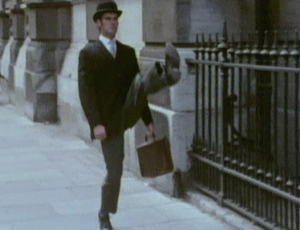Higher geometry of charged dynamics

Higher-geometric structures in the description of phenomena involving topological charges: From Dirac’s heuresis to prequantisation, categorification of symmetries and defects
Goal: Understanding the inevitability and naturality of geometrisations of integral classes in the de Rham cohomology which represent gauge fields coupling to charge currents in nontrivial spacetime topology (i.a., the topology of the Aharonov-Bohm experiment), alongside the semi-quantum-mechanical nature of the ensuing higher-geometric structures (fibre bundles, bundle gerbes etc.); studying the categorification of group-like configurational symmetries and the appearance of spacetime defects in their gauging in this setting.
Logical scheme:
- The necessary rudiments of the de Rham, Čech-de Rham and Beilinson-Deligne cohomologies. (after Bott and Tu resp. Brylinski).
- Basics of quantum mechanics requisite for the understanding Dirac’s semi-heuristic argument for the semi-quantum-mechanical nature of the classical action functional (or, more precisely, of the Dirac- Feynman amplitude), using the non-normalisable eigenstates of position and momentum operators in a non-compact configurational geometry. (after Hall, e.g.)
- A review of the principle of least action and the associated first-order formulation. (after Marsden and Ratiu (e.g.), Gawędzki1 and Saunders)
- Dirac’s heuresis and the need for a rigorous definition of the Dirac-Feynman amplitude for closed worldlines in the 1d σ-model (describing co-terminal trajectories). (after Dirac, Feynman and Hibbs, Hall)
- Derivation of the non-tensorial topological term in the Dirac-Feynman amplitude in the form of a Cheeger-Simons differential character, using sheaf-theoretic data of the background Maxwell field. (after Bott and Tu, Alvarez, Gawędzki2, Johnson, Cheeger and Simons)
- Reconstruction of the geometric object represented by the sheaf-theoretic data – the complex line bundle with the reduced structure group U(1) and compatible connection. (after Gawędzki2 and S’s lecture notes)
- Rudiments of prequantisation. (after Woodhouse)
- Configurational symmetries and their gauging in the language of fibre bundles – categorification and equivariantisation. (after Cartan, Tu (the associated geometry and the appearance of worldline defects; elements of equivariant cohomology and the homotopy model of dynamics on orbispaces) and Gawędzki-Waldorf-S (beyond minimal coupling))
Perspective: The higher geometry of charge fields as a prequantum yonedian geometry of spacetime, deabelianisation of gauge groups in manifestly self-dual theories, categorification of symmetries and dualities at large, field theories with defects (higher categories over covariant configuration bundles in the modelling of defect networks), equivariantisation of the higher geometry as a condition for the descent unto the orbispace of a grouplike symmetry, Courant-type algebroids and Dirac structures in the description of gauge anomalies, the defect-duality correspondence.
Study team: Damian Kayzer, Piotr Schmidt, Jan Turczynowicz
Supervision: Rafał R. Suszek
Literature:
- Bott, R. and Tu, L.W., “Differential Forms in Algebraic Topology”, Graduate Texts in Mathematics, Vol. 82, Springer, 1982.
- Brylinski, J.-L., “Loop Spaces, Characteristic Classes and Geometric Quantization”, Progress in Mathematics, Vol. 107, Birkhäuser, 1993.
- Hall, B.C., “Quantum Theory for Mathematicians”, Graduate Texts in Mathematics, Vol. 267, Springer, 2013.
- Marsden, J.E. and Ratiu, T., “Introduction to Mechanics and Symmetry”, Texts in Applied Mathematics, Vol. 17, Springer, 1999.
- Gawędzki, K., “On the geometrization of the canonical formalism in the classical field theory”, Reports on Mathematical Physics 3 (1972) 307-326.
- Saunders, D.J., “The Geometry of Jet Bundles”, London Mathematical Society Lecture Note Series, Vol. 142, Cambridge University Press, 1989.
- Dirac, P.A.M., “The Lagrangian in Quantum Mechanics”, Physikalische Zeitschrift der Sowjetunion 3 (1933) 64-72.
- Feynman, R.P. and Hibbs, A.R., “Quantum Mechanics and Path Integrals”, McGraw-Hill, 1965.
- Alvarez, O., “Topological quantization and cohomology”, Communications in Mathematical Physics 100 (1985) 279-309.
- Gawędzki, K., “Topological Actions in Two-Dimensional Quantum Field Theory”, Nonperturbative Quantum Field Theory (‘t Hooft, G., Jaffe, A., Mack, G., Mitter, P. and Stora, R., eds.), Plenum Press, 1988, 101-141.
- Johnson, S., “Constructions with Bundle Gerbes”, Ph.D. Thesis, The University of Adelaide, Australia, 2002.
- Cheeger, J. and Simons, J., ch. Differential characters and geometric invariants, Geometry and Topology, Lecture Notes in Mathematics, Vol. 1167, 50-80, Springer, 1985.
- Woodhouse, N.M.J., “Geometric Quantization”, Oxford Mathematical Monographs, Oxford University Press, 1992.
- Cartan, H., “La transgression dans un groupe de Lie et dans un espace fibré principal”, Colloque de Topologie (espaces fibrés) Bruxelles 1950, Centre Belge de Recherches Mathématiques, Louvain, Belgium, 57-71.
- Tu, L.W., “Introductory Lectures on Equivariant Cohomology”, Annals of Mathematics Studies, Vol.204, Princeton University Press, 2020.
- Gawędzki, K., Waldorf, K. and Suszek, R.R., “Global gauge anomalies in the two-dimensional bosonic sigma model” , Communications in Mathematical Physics 302 (2011) 513-580; “The gauging of two-dimensional bosonic sigma models on world-sheets with defects”, Reviews in Mathematical Physics 25 (2013) 1350010.
